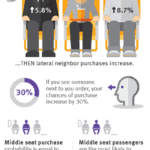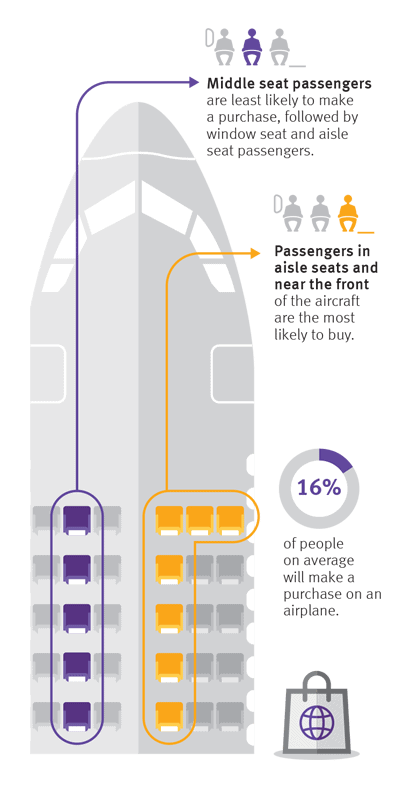Influential Neighbors: Passenger Purchase Behavior
Share
This article originally appeared in The Culture Issue of APEX Experience.
Here’s some literal food for thought: 30 percent of airline passengers will make an onboard purchase if the person sitting next to them buys something first. It’s a phenomenon called “product contagion” and, according to a recent Stanford University marketing study, it means that if airlines can figure out how to sell something to that first passenger, they can almost guarantee another sale to one in three adjacent passengers. This study, authored by marketer Pedro M. Gardete, could be the golden ticket for airlines looking to boost their in-flight revenue.
To come up with his results, Gardete studied in-flight purchases on US domestic routes of a single North American airline. By using passenger data to focus exclusively on solo travelers, and tracking their purchases (food, alcoholic beverages and movies) via touchscreen, Gardete was able to isolate the buying behavior of economy-class passengers. The study revealed what factors make people buy things on flights, and the results are fascinating.
The most likely passengers to make an in-flight purchase are those sitting in aisle seats towards the front of the plane on long night flights.
According to the study, the most likely passengers to make an in-flight purchase are those sitting in aisle seats towards the front of the plane on long night flights. In fact, for every 10 minutes a flight is in the air, purchases rise by four percent. Delays make a major difference in purchasing too, but only those caused by weather or the National Airspace System. That’s because those delays don’t come with meal-compensation vouchers that cannibalize onboard sales. Terminal food options absolutely impact onboard sales as well, which leads Gardete to make a great point: “Making coupons available to both airport terminal and in-flight purchases is valuable.” When airlines give passengers the choice of using vouchers onboard, that means they’re able to make more money instead of the terminal restaurants.
So how can an airline incite the most in-flight purchases? On flights that get delayed, offer discounts to middle-seat passengers towards the front of the plane. They’re the least likely to buy on their own, but the most influential in terms of fellow-flyer purchases. Get them to buy and onboard sales are bound to take off.




 Here’s some literal food for thought: 30 percent of airline passengers will make an onboard purchase if the person sitting next to them buys something first. It’s a phenomenon called “product contagion” and, according to a recent Stanford University marketing study, it means that if airlines can figure out how to sell something to that first passenger, they can almost guarantee another sale to one in three adjacent passengers. This study, authored by marketer Pedro M. Gardete, could be the golden ticket for airlines looking to boost their in-flight revenue.
Here’s some literal food for thought: 30 percent of airline passengers will make an onboard purchase if the person sitting next to them buys something first. It’s a phenomenon called “product contagion” and, according to a recent Stanford University marketing study, it means that if airlines can figure out how to sell something to that first passenger, they can almost guarantee another sale to one in three adjacent passengers. This study, authored by marketer Pedro M. Gardete, could be the golden ticket for airlines looking to boost their in-flight revenue.